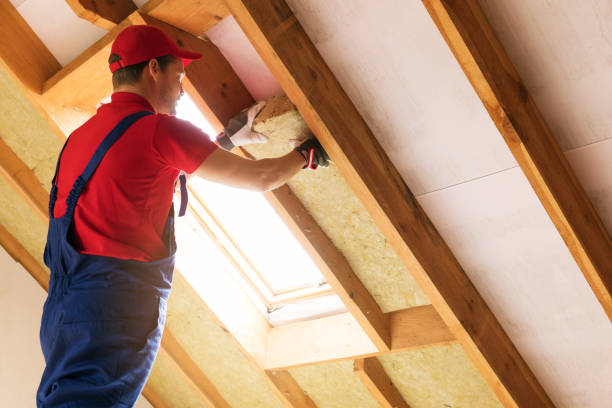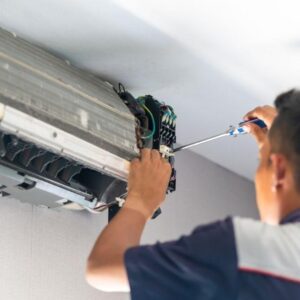Post Preview
Key Takeaways:
- Attic insulation plays a crucial role in maintaining a home’s energy efficiency.
- Proper insulation prevents heat loss in winter and heat gain in summer, reducing energy costs.
- Choosing the right insulation material and maintaining it effectively can significantly impact energy savings.
- Regular evaluation and maintenance can sustain insulation effectiveness and benefits.
Table of Contents:
- Introduction
- Understanding Attic Insulation
- The Impact of Insulation on Energy Bills
- Choosing the Right Insulation Material
- Installation and Maintenance Best Practices
- Insulation and Environmental Benefits
- Maximizing Insulation Efficiency
- Conclusion
Introduction
Energy efficiency is a cornerstone of modern home management, offering a pathway to reduced utility expenses and a positive environmental impact. Proper attic insulation is a primary and highly effective method among the many ways to improve a home’s energy efficiency. Homeowners can make significant strides in cutting down their energy bills by understanding how to optimize attic insulation. This article delves into the fundamental aspects of attic insulation, its impact on energy consumption, and practical tips for maximization.
Understanding Attic Insulation
Attic insulation is more than just a layer of material placed between your home’s roof and living space; it’s an essential barrier that helps to maintain indoor temperature by preventing heat transfer. In colder months, attic insulation minimizes heat loss, preventing your heating system from working overtime. Conversely, in warmer months, it prevents heat from entering your home, alleviating the load on air conditioning systems. Regular activities, like attic cleaning, ensure that insulation remains effective and uninviting to pests and other damaging elements.
The Impact of Insulation on Energy Bills
Insulation plays a pivotal role in managing energy consumption. Without adequate insulation, homes become vulnerable to significant temperature fluctuations, leading to higher energy usage to maintain comfort. Studies show that a well-insulated home can consume up to 15% less energy annually. This reduction directly translates into cost savings on heating and cooling bills. The insulation acts as a thermal envelope, maintaining the desired temperature with less input from heating and cooling systems. As utility prices continue to rise, the cost-effectiveness of superior attic insulation becomes even more pronounced.
Choosing the Right Insulation Material
The performance of your attic insulation largely depends on the type of material used. Standard options include fiberglass, cellulose, spray foam, and rigid foam. Each type offers specific advantages and considerations regarding installation ease, cost, insulation capacity, or R-value. Fiberglass and cellulose are economical options with good insulation properties for most climates. Spray foam provides a higher R-value per inch and doubles as a sealant against air leaks. Although more costly, rigid foam offers excellent thermal resistance and is often used in areas with extreme weather conditions. Choosing the right material involves assessing your energy goals, budget, and regional climate conditions.
Installation and Maintenance Best Practices
Proper installation is crucial to attaining maximum insulation efficiency. Even the best materials won’t perform optimally if installed incorrectly. Professional installation ensures that insulation is applied evenly without gaps or compression, which can dramatically reduce its effectiveness. Post-installation, regular checks are essential. Over time, insulation can settle or become displaced, leading to decreased performance. It’s also subject to moisture damage, making checking for leaks and humidity vital, especially in regions prone to heavy rainfall. Maintenance strategies like implementing proper ventilation and occasional inspections help uphold the integrity of your attic insulation.
Insulation and Environmental Benefits
Beyond the monetary savings, proper attic insulation contributes significantly to environmental conservation. By requiring less energy for heating and cooling, insulated homes contribute to reduced greenhouse gas emissions from electricity generation. This reduction is pivotal in efforts to combat climate change. Furthermore, using eco-friendly and sustainable insulation materials enhances this positive impact. Choosing recycled or recyclable materials lowers your carbon footprint and supports a broader ecological balance. High-performance insulation materials help homes achieve better energy rankings, which is crucial for future-proofing properties against rising environmental regulations and standards.
Maximizing Insulation Efficiency
Consider an integrated approach focusing on insulation and air sealing to get the most out of your attic insulation. Air leaks and drafts can account for up to 25% of your home’s energy loss. Combining insulation with a comprehensive air-sealing strategy can significantly enhance energy savings. Address areas like wall penetrations, chimneys, and ductwork prone to leaks. Additionally, consider enhancing other areas of insulation to form a continuous barrier, including walls, floors, and ducts, to create an unbroken shield against energy wastage. Employing tools like infrared cameras can help identify hidden energy leakages, allowing for precise and thorough insulation application.
Conclusion
In conclusion, installing proper attic insulation reduces energy bills and enhances a home’s energy efficiency. By investing in the right materials, adopting best installation practices, and committing to regular maintenance, homeowners can enjoy significant savings and contribute to environmental conservation. Given the challenges of climate change and fluctuating energy prices, optimizing attic insulation represents a responsible and wise investment that benefits homeowners and the planet. It’s time to rethink how we insulate our homes and take action that leads to a more sustainable and cost-effective future.




